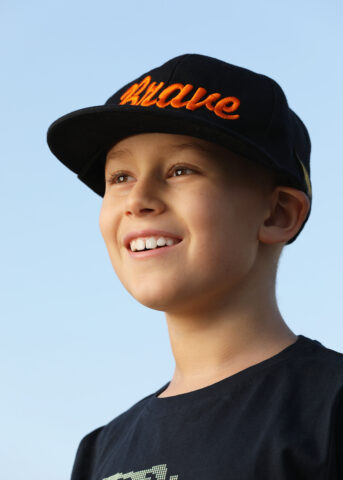With a New Year’s Eve party a few hours away, Ruth Chi sent her 5-year-old daughter, Lauren, upstairs for a quick nap to ensure she’d have the energy needed later to ring in 2018.
Ruth had just turned her attention back to party prep in the kitchen when she heard yelling upstairs. Suddenly, her eldest son ran past her and into the adjacent backyard.
Lauren had fallen from her second-story window and landed on the concrete patio below. Her brother cradled her in his arms.
“I ran outside the screen door and saw my son hugging Lauren, who was on the ground,” Ruth says.
Crying only slightly, Lauren seemed miraculously unharmed. Ruth carried her daughter inside and examined her body from head to toe. She didn’t see any blood or notice any obviously broken bones. Lauren could understand her mother’s instructions, was responsive and could speak.
The only thing amiss that Ruth noticed were faint red marks on the side of Lauren’s body and a small bump on the right side of her head. Not wanting to take a chance, Ruth brought her daughter to closest emergency room despite Lauren’s protests that she might miss the party.
After a few tests and just 20 minutes or so, the team at the hospital prepared the family to be brought by ambulance to CHOC Hospital’s level II pediatric trauma center. Critically injured children from across the region are transported and transferred to CHOC for the pediatric expertise only a children’s hospital can provide. CHOC’s trained trauma team cares for children and their unique physiological, anatomical and emotional needs with protocols and equipment designed for pediatric patients.
At CHOC, Lauren and Ruth were met by a team of experts who performed more tests and scans. Lauren was the 22nd patient to be treated at CHOC that year for having fallen from a window. The following year, CHOC would go on to see 15 such patients, and in 2019, an additional 24 patients. And in the first 10 months of 2020, CHOC has treated 18 patients who tumbled from a window, says Amy Waunch, CHOC’s trauma program manager.
The no. 1 reason why children fall from windows is furniture placed below, Amy says – and that is exactly what happened with Lauren.
With warm weather a near constant in Southern California, Lauren opened her locked bedroom window. The curious 5-year-old climbed atop her bed and pushed her head against the window screen to survey a nearby park.
The window had a safety mechanism in place to prevent it from being opened too wide, but children can slip through gaps any wider than 4 inches, Amy says.
All those factors, combined with Lauren’s size and strength, allowed her to push through the screen and plummet out the window and onto the ground.
The most common injuries resulting from a window fall treated at CHOC are head injuries like skull fractures and intracranial bleeding, followed by extremity fractures, Amy says.
Lauren, however, seemed just fine. She and her mother passed the time waiting for test results by talking and playing games.
But the family received sobering news at about 9 p.m. that night, when Lauren was diagnosed with an epidural hematoma, a type of traumatic brain injury when blood builds up between the outer membrane of the brain and the skull. This can create pressure on the brain’s tissue and can be deadly.
Lauren would need surgery right away, CHOC experts told the family, who quickly agreed. Lauren was taken to the operating room.
After about an hour, Ruth and her husband were reunited with Lauren in the post-anesthesia care unit.
“She responded well when we talked to her,” Ruth recalls.
After a three-day stay at CHOC’s main hospital campus, Lauren and her family headed home.
After several neurosurgery follow-up appointments, Lauren began treatment with pediatric neurologist Dr. Sharief Taraman. Additionally, Lauren underwent neuropsychologic assessment to determine whether the injury affected her cognitive function.
Today, three years later, Lauren is a happy and healthy 8-year-old with no signs that she survived a near fatal accident. In fact, Ruth even needs to remind her fearless daughter to be careful sometimes.
And she’s not stopping with reminders. The furniture has been rearranged in Lauren’s room, and Ruth continues to caution her friends about the dangers of children and window falls.
“Never say never, I tell people,” Ruth says. “I never would have thought this would happen to me or my family or my daughter. It’s almost impossible. Well, it happens.”
Get more expert health advice delivered to your inbox monthly by subscribing to the KidsHealth newsletter here.

Learn more about CHOC’s Neuroscience Institute
CHOC Hospital was named one of the nation’s best children’s hospitals by U.S. News & World Report in its 2024-25 Best Children’s Hospitals rankings and ranked in the neurology and neuroscience specialties.




